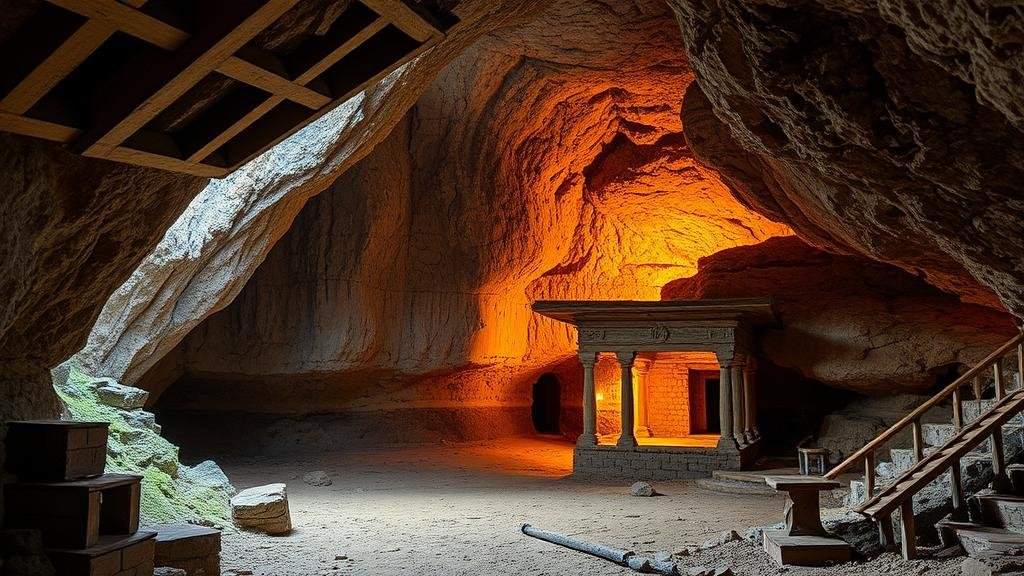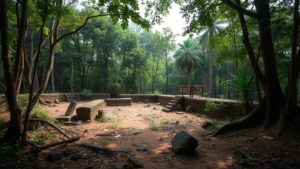Investigating unexplored caves in Peru’s Sacred Valley for signs of hidden Incan ceremonial cities.
Investigating Unexplored Caves in Peru’s Sacred Valley for Signs of Hidden Incan Ceremonial Cities
Located in the heart of the Andes Mountains, Peru’s Sacred Valley is renowned for its rich cultural heritage, particularly the remnants of the Incan civilization. While many archaeological sites have been explored, numerous caves remain shrouded in mystery, potentially concealing evidence of ancient ceremonial cities. This article delves into the significance of these explorations, the scientific techniques involved, and the potential revelations waiting to be uncovered.
The Historical Context of the Sacred Valley
The Sacred Valley, or Valle Sagrado, spans approximately 60 kilometers northwest of Cusco, Peru, and served as a crucial area for the Incas between the 15th and 16th centuries. This valley is dotted with impressive ruins, such as Ollantaytambo and Pisac, which reflect the Incas’ architectural prowess and their deep connection to spirituality and agriculture.
According to historians, the Incas built cities strategically in relation to natural features, particularly mountains and rivers, which were considered sacred. This holistic approach suggests that hidden cities could be located in the valleys numerous caves, which could have served for ceremonial purposes or as refuges during invasions.
Unexplored Caves: A Treasure Trove of Possibilities
Many caves in the Sacred Valley remain largely unexplored. The vast network of limestone caves, particularly in the Urubamba Mountain range, offers ideal conditions for preserving artifacts and structures from the Incan era. Explorations in these caves can yield:
- Ceremonial artifacts, such as pottery and textiles.
- Inscriptions and petroglyphs that could provide insight into Incan rituals.
- Remains of ancient agricultural practices and food storage systems.
For example, in 2020, a team of Peruvian archaeologists discovered a series of underground chambers in the Qenko complex, believed to be linked to ancient rituals. This exemplifies the potential waiting to be uncovered in unexplored caves throughout the Sacred Valley.
Scientific Techniques for Cave Exploration
Modern archaeological methods play a critical role in the exploration of caves. Techniques such as ground-penetrating radar (GPR), 3D scanning, and drone technology enable researchers to create detailed maps of cave systems without extensive excavation. e methods help identify possible areas of interest for further exploration while minimizing damage to sensitive environments.
Also to technology, interdisciplinary collaboration enhances explorations. Archaeologists often work alongside geologists and environmental scientists to understand the cave formations, their geological significance, and how they relate to the cultural history of the Incas.
Real-World Applications of Cave Discoveries
The discoveries made in the unexplored caves can have significant implications for a variety of fields, including:
- Cultural Heritage Preservation: Uncovering and preserving Incan artifacts and structures contribute to our understanding of history and can promote tourism.
- Environmental Studies: Analysis of cave deposits can provide insights into historical climate changes and agricultural practices of the Incas.
- Community Engagement: Involving local communities in archaeological projects fosters education and can nurture pride in cultural heritage.
Challenges and Considerations
While exciting, cave exploration also presents challenges. Issues such as limited funding, logistical difficulties, and the need for specialized equipment can hinder efforts. Also, ethical considerations, including respect for indigenous cultures and sustainable practices in excavation, must be prioritized.
Plus, the preservation of delicate cave ecosystems is essential. Researchers must ensure their methods do not disrupt these environments, which can carry immense historical and biological value.
Conclusion: The Path Ahead
The unexplored caves in Peru’s Sacred Valley represent a significant frontier for archaeological investigation. As technology advances and methods improve, the potential to discover hidden Incan ceremonial cities becomes increasingly tangible. By employing a careful, respectful approach to exploration, we stand to gain profound insights into a civilization that has shaped the identity of Peru and its people for centuries.
Future generations can ultimately benefit from these discoveries, fostering a deeper understanding of the past while enriching the cultural narrative of the Sacred Valley.



